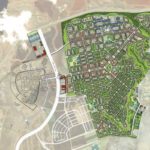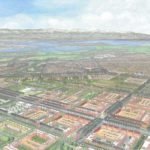Ho'opili Master Plan: A Visionary Transit-Oriented Community
Project's Summary
Ho'opili Master Plan: A Transit-Oriented Community in Ewa District
Van Meter Williams Pollack architectural studio has created a visionary plan for a 1,600-acre transit-oriented community in Ewa district, west of Oahu. The Ho'opili Master Plan aims to cater to the needs of a rapidly urbanizing area by providing a mix of uses, natural open spaces, parks, bike paths, and schools, all centered around a series of transit stations. This type of development is the first of its kind in Hawaii, introducing new urbanist design concepts while maintaining and enhancing traditional Hawaiian values.
A Focus on Walkability and Housing Diversity
One of the key features of the Ho'opili Master Plan is its emphasis on walkability, making it easy for residents to move about the community by foot or bike. The community will be designed to encourage a mix of uses, including retail, residential, and commercial, all within close proximity of each other. This approach will create a vibrant, livable community that is also sustainable, reducing the need for cars and promoting a healthier, more active lifestyle for residents.
Another important aspect of the Ho'opili Master Plan is its focus on housing diversity. The community will offer a range of housing options, including affordable housing, rental units, and homes for families of all sizes. This approach ensures that the community is accessible to a wide range of income levels and promotes a sense of inclusivity and diversity.
Preserving Traditional Hawaiian Values
While the Ho'opili Master Plan introduces new urbanist design concepts, it also seeks to maintain and enhance traditional Hawaiian values. The community will feature natural open spaces, parks, and other amenities that reflect the unique culture and history of the Hawaiian Islands. In addition, the community will be designed to promote sustainability and protect the natural environment, which is a core value of Hawaiian culture.
Regional Connectivity
Finally, the Ho'opili Master Plan is designed to promote regional connectivity, making it easy for residents to travel to other parts of the island. The community is located near major transportation hubs and will feature a network of transit stations, making it easy for residents to access public transportation. This approach will reduce traffic congestion and promote a more sustainable, livable community for everyone.
In conclusion, the Ho'opili Master Plan represents a visionary approach to community development in Hawaii. By focusing on walkability, housing diversity, and regional connectivity, while preserving traditional Hawaiian values, the community promises to be a vibrant, inclusive, and sustainable place to live for years to come.
Read also about the Residencia Betancourt Reyes: A Contemporary Masterpiece by Won Arquitectos project





